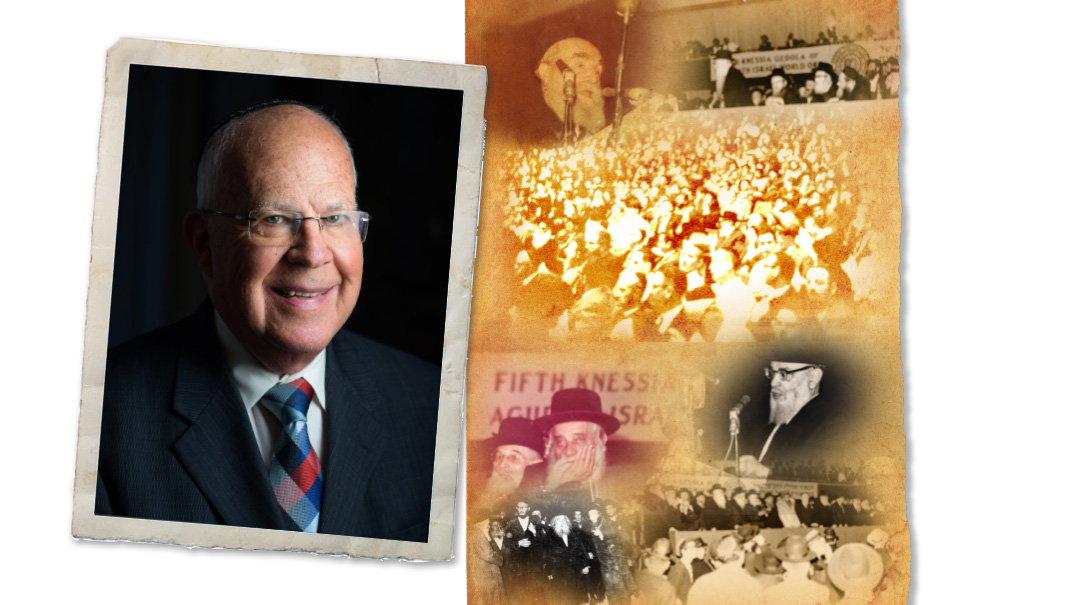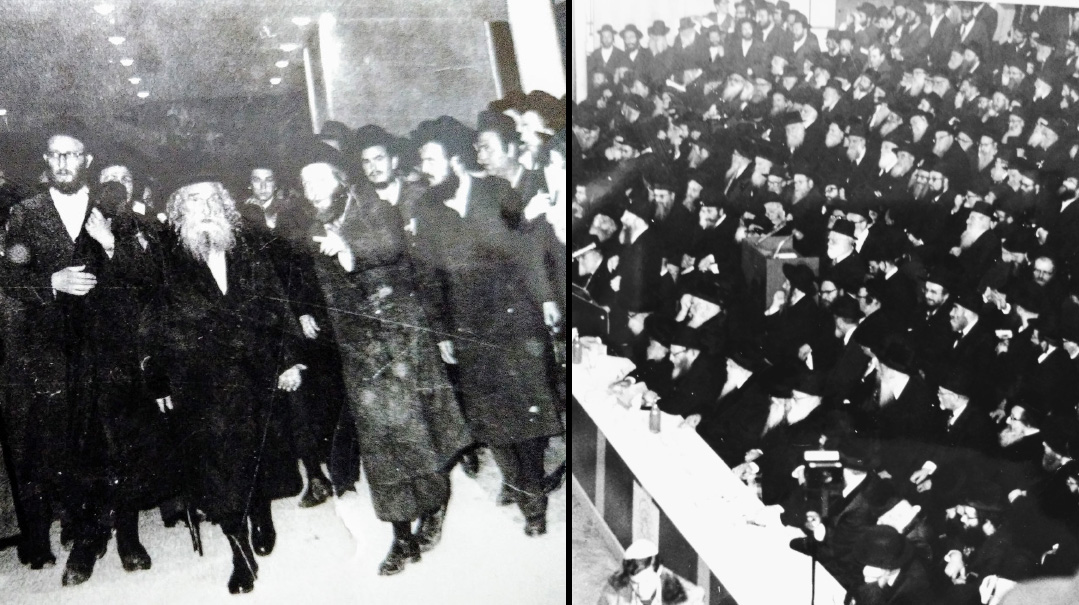For Love of the Land

A pen and a camera made Schaye Schonbrun Agudah’s man in the Knessiah Gedolah

Photos: Naftoli Goldgrab, Schaye Schonbrun archives
Israel in general, and Jerusalem in particular, are so beautiful and different from our normal way of life that it is difficult to know where to begin. No picture, no matter how vivid, or story, no matter how well written, can accurately describe the life here…
(excerpt of Schaye Schonbrun’s diary)
Rabbi Schaye Schonbrun has the verve and spring in his step of a much younger man, buoyed by his passion for his vocation and his many interests. Clean-shaven, wearing rimless glasses and a kippah serugah, he spent 38 years as a principal and teacher at the Hebrew Academy of Nassau County (HANC). But back in 1964, when this diary account was written, he was a 23-year-old visiting Eretz Yisrael for the first time as a Zeirei Agudah delegate to the 1964 Knessiah Gedolah of Agudath Israel. A recent graduate of the City College of New York and a talmid of Rav Moshe Feinstein, his parents were deeply involved with Agudath Israel, and he’d inherited their passion.
His infatuation with the Land led to many trips back over the years. While he was surprised by the absolute lack of formality that characterized religious Israeli politics, he was overwhelmed by the beauty of the country and the valor of its simple people, mostly Sephardim, struggling valiantly to hang onto their emunah despite poverty and hostile opposition.

The overflow crowd at the July 1964 Knessiah Gedolah in Binyanei Haumah (left); the Gerrer Rebbe entering the convention center (right)
Reporter on the Scene
Rabbi Schonbrun poses for Mishpacha’s photographer in a black mesh fedora from Australia (“my hole-y hat,” he jokes), not the standard yeshivish Borsalino. But he’s definitely the product of an Agudath Israel childhood; his father was extremely active in Agudath Israel in his childhood shul, Zeirei Agudath Israel of the East Bronx. “I grew up in Pirchei, then Zeirei, and eventually became part of the national executive board,” he says. “I was brought to every Agudah convention by my parents from the time I was three years old.”
Their East Bronx neighborhood, later nicknamed “Fort Apache,” began to decline in the 1950s, to the point that police estimated 19 out of 20 deaths were not due to natural causes. Jewish kids had to walk two long, “very scary” blocks to get to the subways that ferried them to RJJ and Bais Yaakov. The yeshivah kids would travel together in their own subway car. As the Jewish community began fleeing the neighborhood, the Schonbrun family followed suit, leaving for Kew Gardens in 1956.
The young Schaye had a penchant for writing, and was asked to pen the Zeirei newsletters. He also was, and remains, an enthusiastic amateur photographer. When the 1964 Agudah Knessiah in Jerusalem was announced, he was sent as a delegate, traveling there with his parents, who were also delegates.
These international conferences didn’t happen often. “The very first Agudah Knessiah happened in 1910, and they had one about every ten years or so,” he explains. “This was the fourth one.” Part of Schaye’s mission included sending accounts of the Knessiah, written on aerograms, back to the Agudah in the US. He documented the trip by camera as well, producing precious photos of the gedolim who attended, and pictures of Eretz Yisrael in its early days.
Oops! We could not locate your form.







